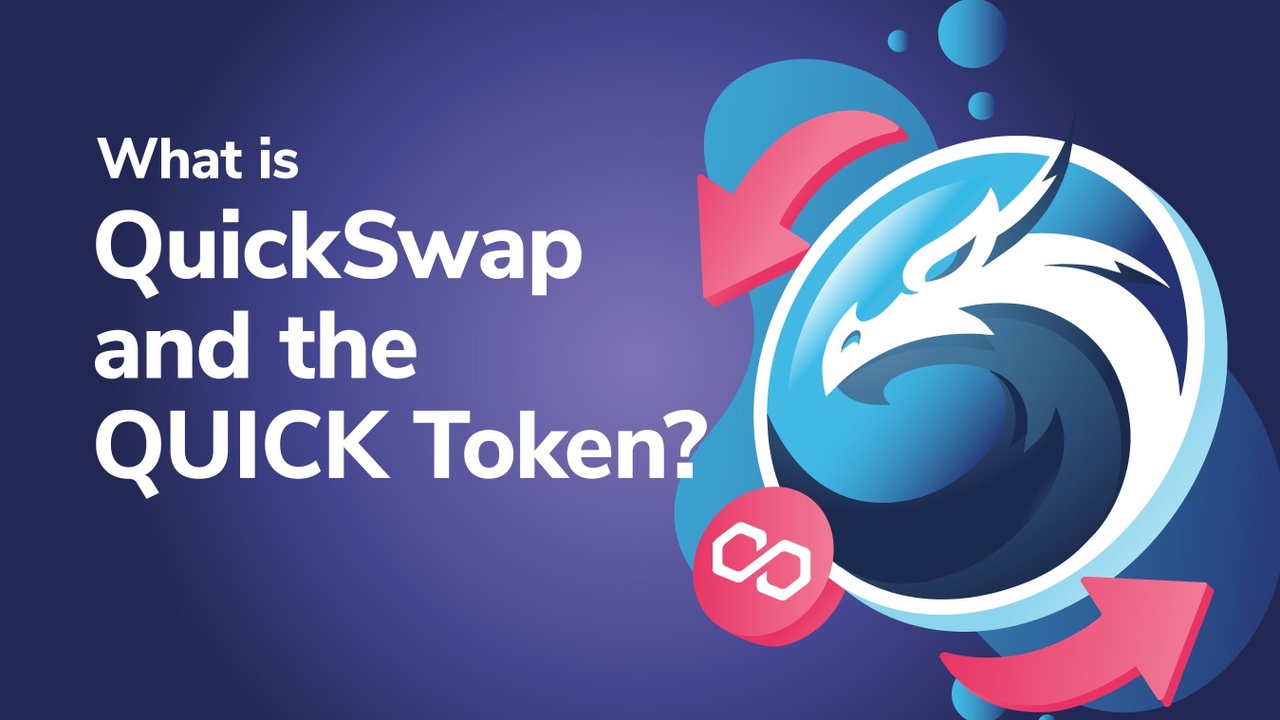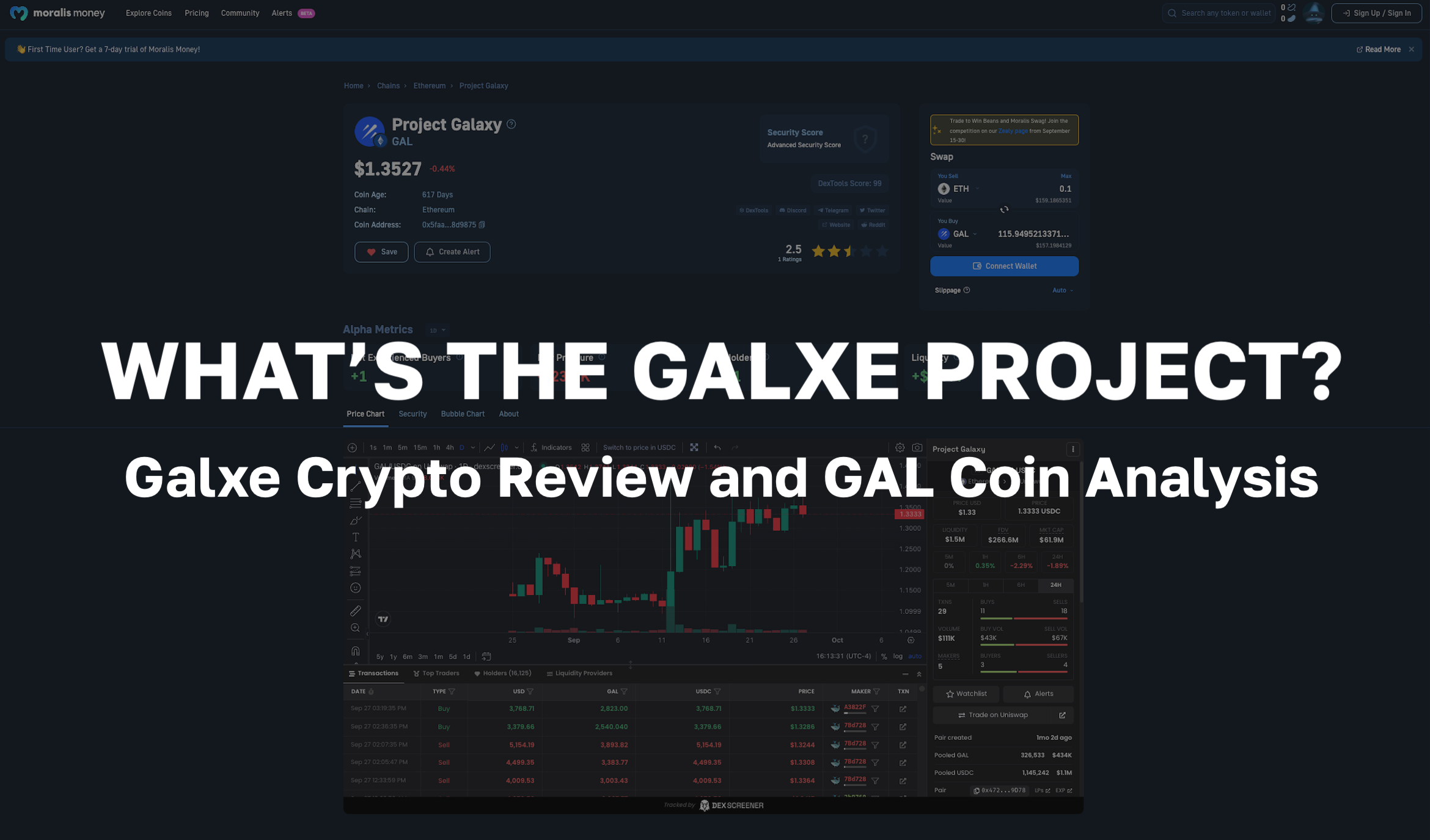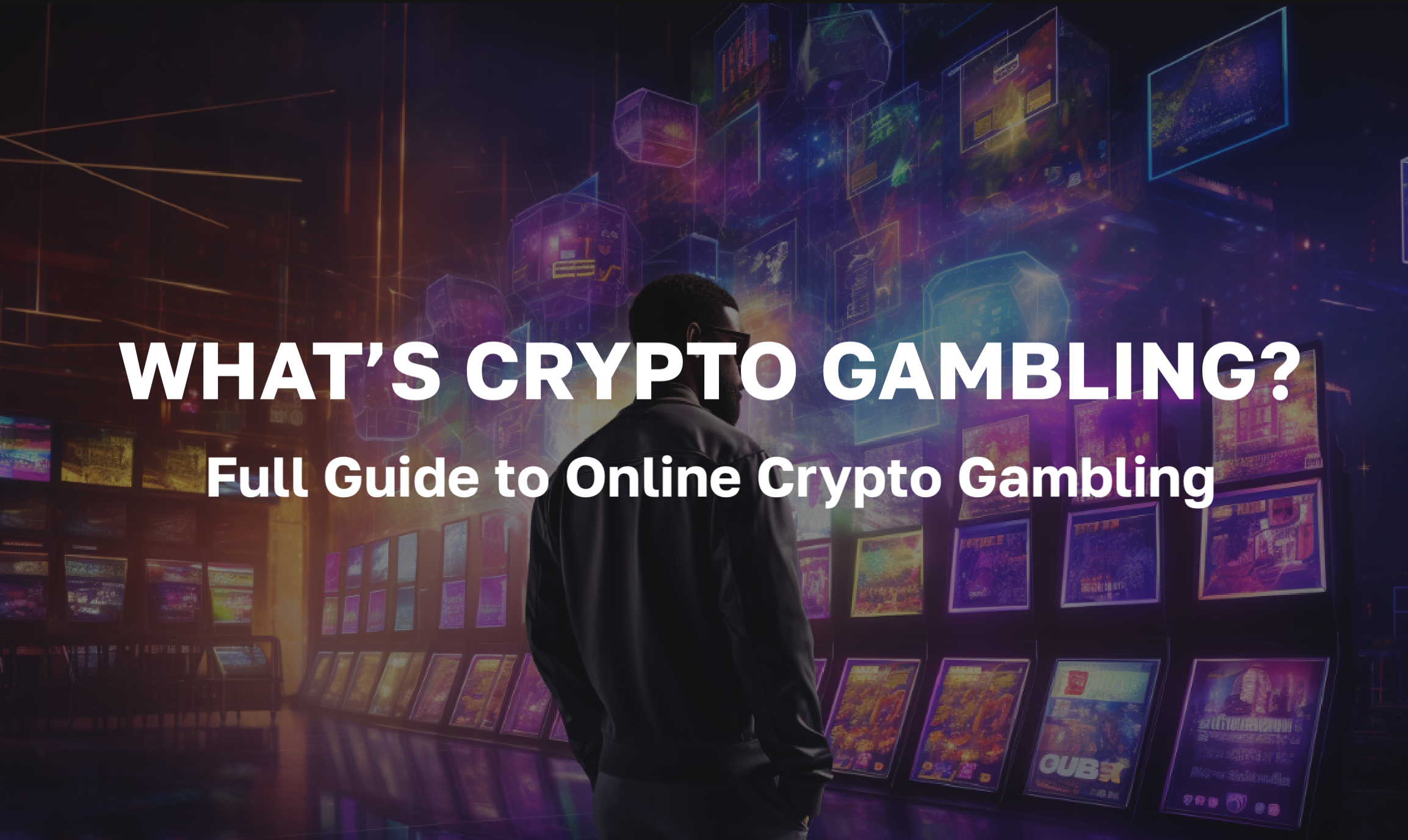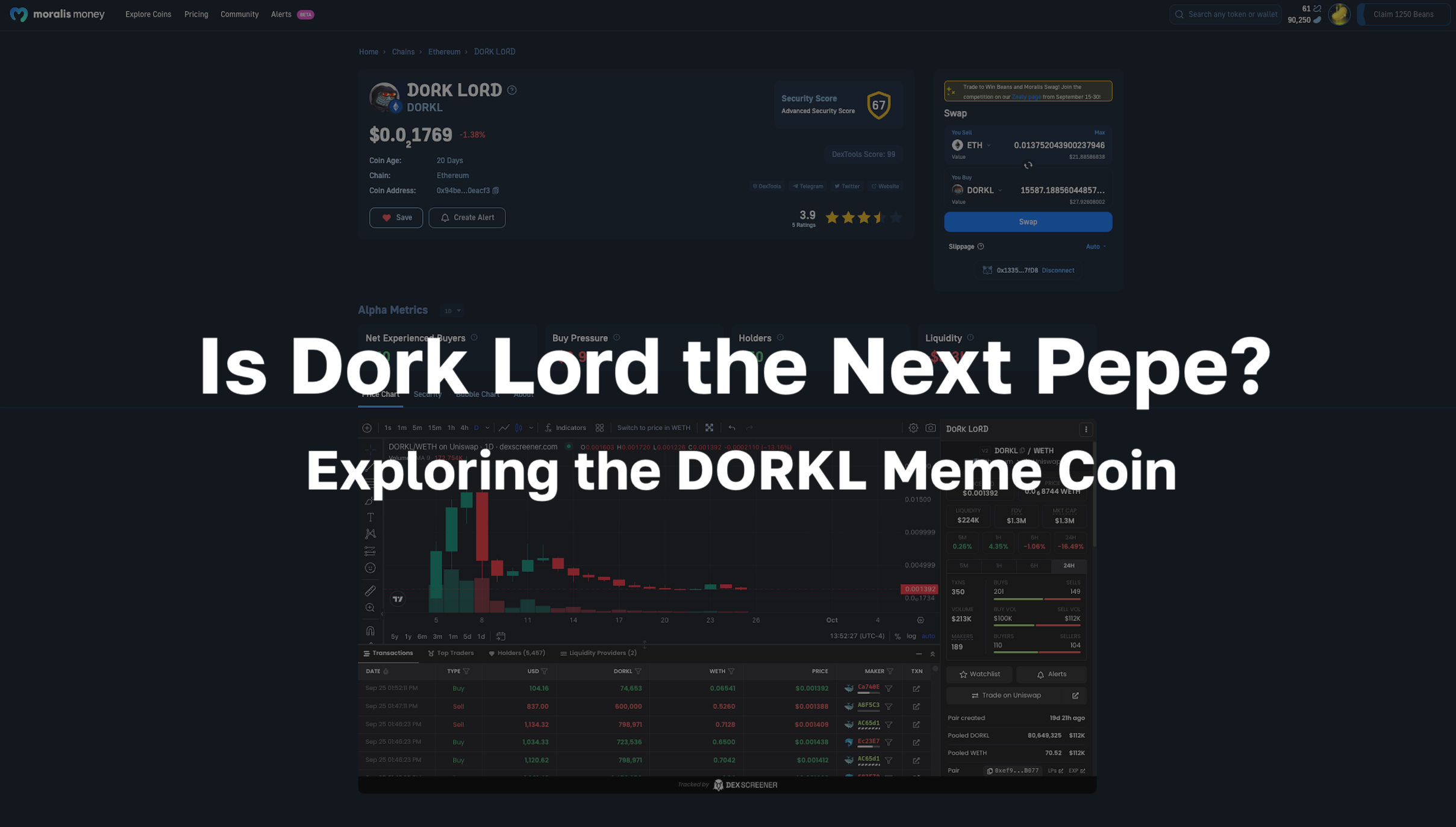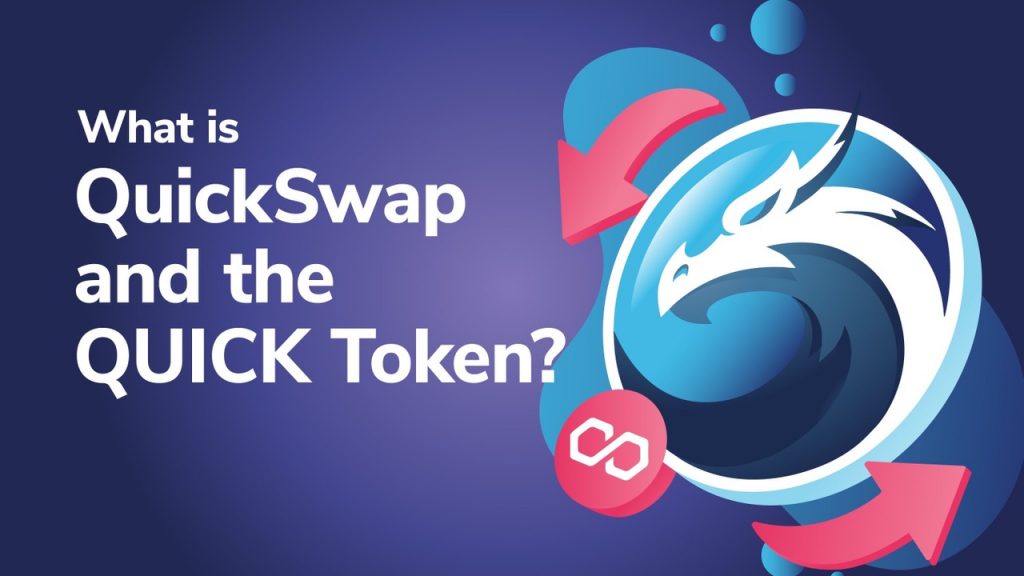
QuickSwap is a popular automated market maker (AMM) offering users a decentralized exchange (DEX) experience. Built on Polygon Network (previously Matic Network) as an Ethereum layer-2 application, the QuickSwap exchange presents a similar trading experience to the number one DEX on Ethereum, Uniswap. However, QuickSwap boasts improvements in certain areas. Moreover, the native QUICK token has seen immense success and adoption. QuickSwap offers QUICK token holders the chance to partake in the Dragon’s Lair to earn Dragon’s QUICK token (dQUICK). In turn, users can earn a passive income with QUICK tokens. Furthermore, the QUICK token is seeing listings across some of the largest crypto exchanges in the industry. This includes listings with Crypto.com, Coinbase, and Binance, among others. But, what is QuickSwap doing to become so popular? Also, how can you earn Dragon’s QUICK tokens (dQUICK) with the QuickSwap exchange?
In this ultimate guide to QuickSwap, we are going to dive deep into the QuickSwap exchange. We’ll cover the underlying fundamentals of the project and why projects are implementing Ethereum layer-2 solutions. Additionally, we’ll look at the native QUICK token and how to attain the Dragon’s QUICK token (dQUICK). Also, we’ll explore the various exchange listings and the most recent update to the platform.
QuickSwap is a decentralized application (dApp) using Ethereum layer-2 solutions. If you would like to learn more about how blockchain and decentralized finance (DeFi) work under the hood, see our Blockchain & Bitcoin 101 and Ethereum 101 courses. Designed for beginners, Ivan on Tech Academy provides expert-led video-guided courses using various teaching techniques to cater to different learning styles. Alternatively, learn how to safely invest in cryptocurrency with our Crypto Basics course! No matter your experience, Ivan on Tech Academy has the right course for you!
What is QuickSwap?
QuickSwap is a next-generation decentralized exchange (DEX) and automated market maker (AMM) operating on the Polygon (Matic) network. Moreover, QuickSwap has gone from strength to strength since its inception in October 2020. The permissionless AMM frequently shares updates of partnerships and updates to the platform. A recent partnership with Gelato Network means users of QuickSwap can now trade using limit orders! Also, QuickSwap allows QUICK token holders to earn Dragon’s QUICK tokens (dQUICK) to earn a passive income with the QUICK token!
As a clone of Uniswap, the top-performing Ethereum DEX, QuickSwap is one of the fastest-growing Ethereum layer-2 exchanges in terms of user adoption. This is mainly due to its ability to offer traders minute gas fees and near-instant transaction confirmation times. But, how does QuickSwap facilitate such low-cost trades?
What are Automated Market Makers?
QuickSwap uses an automated market maker (AMM) model to give users the frictionless experience of a decentralized exchange (DEX). Although often referred to as a “layer-2 DEX” on Ethereum, under the hood, QuickSwap uses a distinctively different exchange model.
Decentralized exchanges (DEXs) are peer-to-peer, network-operated protocols allowing users to match buy and sell orders of their choice of cryptocurrency. As DEXs are open-source and permissionless, anyone can interact with these smart contracts. DEXs operate with peer-to-peer contracts (P2P), directly matching exchange orders.
Automated market makers (AMMs) too allow for the same permissionless peer-to-peer trading. However, instead of matching orders with an order book, AMMs transact using liquidity pools. Instead of peer-to-peer trading as with DEXs, AMMs offer trading with a peer-to-contract (P2C) transaction. Moreover, AMMs allow users to become liquidity providers (LPs) and earn a passive income with their crypto!
The automated market maker (AMM) model is a popular choice throughout the decentralized finance (DeFi) industry. Alongside QuickSwap, other forks of the Uniswap AMM include SushiSwap and PancakeSwap. To learn more about AMMs, save our “What are Automated market makers (AMMs)?” article for later!
As a compelling alternative to centralized exchanges, automated market makers (AMMs) are seeing continuous growth. There’s over $27 billion total value locked (TVL) in decentralized exchanges (DEXs) alone on Ethereum, according to DeFi Pulse, at the time of writing. This is close to the peak of $29 billion during May 2021.
However, with such immense adoption and a phased rollout of Ethereum 2.0, network congestion and high gas fees are often problematic. Further, this could exclude everyday traders who cannot afford a three-figure gas fee for a two-figure exchange transaction.
Why Use Ethereum Layer-2 Solutions?
Ethereum layer-2 solutions are in place to scale the number one smart contract-enabled blockchain. In turn, solutions are increasing their security and accommodating mass adoption. As the second-largest blockchain, Ethereum is one of the most secure blockchain networks in the industry. Also, Ethereum is host to over 80% of decentralized finance (DeFi) applications offering reputable and reliable features for designing and deploying decentralized applications (dApps). However, Ethereum only has a limited throughput and validating resources. Therefore transactions can often be costly and timely during periods of high network traffic.
Layer-2 solutions solve this challenge in two ways. Firstly, layer-2 solutions are applications operating on top of the Ethereum blockchain, still using the main native chain for network security. Further, developers are becoming increasingly creative with alternative methods of transacting on layer-2 applications. Often, the main computations for validating and verifying transactions take place off-chain. Then, proof of verification will be recorded on-chain through various means. This includes the likes of zk-SNARKs and zk-Rollups. In turn, the computational requirements significantly reduce, thus facilitating much cheaper and faster transactions.
QuickSwap is running on the Polygon network, previously known as Matic Network. Polygon is one of the most prominent layer-2 solutions for Ethereum. Polygon offers developers a seamless experience for designing and deploying decentralized applications (dApps) through the network. Using an iteration of Plasma, Polygon allows dApps to facilitate cost-efficient and fast transactions thanks to its Proof-of-Stake (PoS) sidechains. Save our “What is Polygon Network and MATIC?” article for later to learn more!
QUICK Token
The QUICK token is a multi-utility ERC-20 token with community-centered distribution and initiatives and two essential functions. Firstly, the QUICK token grants token holders governance rights. This means QUICK token holders can vote on proposals and updates to the platform.
Secondly, the other main use case for the QUICK token is staking. Staking the QUICK token with QuickSwap not only increases the security of the network, but it also removes QUICK tokens from circulation and offers users the chance to earn a passive income with decentralized finance (DeFi). Moreover, staking while providing liquidity earns users 0.3% of all transaction fees, plus further QUICK token rewards for participating.
The QUICK token has a maximum supply of one million tokens. For QuickSwap, the community comes first. QuickSwap’s token distribution model supports this ethos, with a total of 96.75% of the QUICK token supply allocated to community incentives. Of this, 90% of QUICK tokens will be as rewards through liquidity mining. The project did as much as possible to keep the QUICK token launch fair. There was no pre-sale, private, public, or seed rounds, or pre-mine.
Moreover, as QuickSwap believes in cooperation over competition, the rewards for liquidity mining with Uniswap UNI-pools are from 5% of the QUICK token supply. The funds for liquidity mining payouts are safe in a multi-sig wallet that will continuously payout liquidity providers (LPs) for the next three and a half years. The multi-sig wallet requires three out of four signatures from the project founders to access or adjust the wallet. The QuickSwap team believes in decentralization and does everything possible to prove this to users of the platform.
QUICK Token Exchanges
The native QUICK token has seen success after success. Following a fruitful and productive launch, the QUICK token rose from $40 during the middle of February 2021 to $540 just a month later. Furthermore, during the May 2021 decentralized finance (DeFi) hype, QUICK token reached nearly $1500 (and did on some crypto exchanges!) according to CoinGecko. At the time of writing, the QUICK token stands at $685, following a consolidation in price movement since its all-time high in May 2021.
However, the QUICK token is becoming increasingly available on more and more crypto exchanges. Namely, some of the largest exchanges in the industry, including Crypto.com, Coinbase, and Binance! On August 13th, 2021, QuickSwap announced seven exchange listings via Twitter.
Crypto.com Listing
Crypto.com is one of the largest centralized crypto exchanges offering a vast ecosystem of services for its users. Moreover, Crypto.com facilitates a fiat-onramp. This means millions of users around the world can invest in the QUICK token through the Crypto.com exchange in local fiat. The current trading pairs include $USD, $EUR, $GBP, and more! During the day of the QUICK token listing on the exchange, the token rose all the way to the number one spot on the “Top Gainers” board within just 24 hours!
Coinbase Listing
Furthermore, the number one crypto exchange in terms of users, Coinbase, is also listing the layer-2 token! Available since August 13th, millions of traders can access the QUICK token through both Coinbase and Coinbase Pro. Coinbase is one of the longest-standing crypto exchanges, regulatory-compliant, and stands to have a strong future in crypto since the Coinbase initial public offering (IPO). Having the QUICK token listed on Coinbase attracts new users and adds a layer of trust and reputability around the token. Moreover, Coinbase is one of the most-used fiat on-ramps for traders new to crypto.
Binance Listing
Another top global crypto exchange, in terms of trading volume, Binance, additionally listed the QUICK token on the same day. As a “flash trading update”, Binance introduced the QUICK token to its trading list with four different trading pairs. Traders can invest in the QUICK token with stablecoins USDT or BUSD. Alternatively, users can trade with BTC or BNB.
In addition to the shout-out tweet about the Binance listing, QuickSwap also announced QUICK token exchange listings with SimpleSwap.io, Hoo Exchange, and ZB Global.
Dragon’s QUICK Token (dQUICK)
The Dragon’s QUICK token, dQUICK, is the asset one receives for staking QUICK tokens in the QuickSwap “Dragon’s Lair” pool. Doing so will help stakers earn more QUICK tokens. The longer users hold on to their dQUICK tokens, the more QUICK tokens they will receive upon burning the dQUICK token when unstaking the funds.
The QuickSwap exchange charges 0.3% for transaction fees across the network, paid in the native QUICK token. Of this 0.3% reserve, there is a 0.04% allocation to buy back QUICK tokens at market price and distribute these as rewards to stakers. The remaining pool from transaction fees is then equally divided and split proportionally to Dragon's QUICK token (dQUICK) holders. The amount is dependent upon the market value of QUICK, trading volume, and the amount of QUICK tokens staked.
In short, the Dragon’s Lair allows users to stake QUICK tokens and receive Dragon's QUICK tokens in return. Then, as the number of fees increases, as too will the value of the dQUICK token. Users can then unstake their locked-up QUICK, burning the dQUICK token, and receive additional QUICK tokens to the funds originally staked. Furthermore, there is no minimum lock-up period with QuickSwap. Users are free to un-stake their funds at any time.
Using the QuickSwap Exchange
As a decentralized platform, users will need to be familiar with a Web3 wallet such as MetaMask to interact with QuickSwap. If you would like a video-led tutorial on installing and navigating the world’s number one Web3 wallet, be sure to check out our DeFi 101 course at Ivan on Tech Academy. With industry-expert tuition and step-by-step guides, you’ll be interacting with popular decentralized finance (DeFi) protocols in no time!
Once you are familiar with MetaMask, interacting with the QuickSwap exchange will feel like an easy and familiar experience. As we know, the QuickSwap exchange is a direct clone of Uniswap without a single line of code changed. The only difference is the newer (although very similar) graphical user interface (GUI), plus the trading experience of a layer-2 solution. QuickSwap has taken the advantages of the largest decentralized exchange (DEX) on Ethereum and recreated a version on a layer-2 network. Polygon Network is a popular choice for deploying layer-2 decentralized applications (dApps), offering a seamless development experience.
A recent partnership with Gelato Network now enables limit orders for traders on QuickSwap. The limit orders feature allows users to buy and sell cryptocurrencies at chosen set prices. This is as opposed to a market order, whereby the transaction is fulfilled at whatever the market price is for the asset at the time of transaction. Adding limit order features to QuickSwap brings an entirely new dimension of trading for the popular layer-2 automated market maker (AMM). Users can also view transaction histories, including open, canceled, and executed orders.
Ultimate Guide to QuickSwap & QUICK Token Summary
In summary of our ‘Ultimate Guide to QuickSwap’ article, QuickSwap is fast becoming the go-to decentralized exchange (DEX) and automated market maker (AMM) on Ethereum’s layer-2 network. This is largely because of the ease, simplicity, and familiarity of the DEX. As a direct clone of Uniswap with a rebranded interface, QuickSwap offers faster and cheaper trades than the number one main-chain DEX. Also, integrations with the decentralized automations solutions platform, Gelato Network, means users of QuickSwap can partake in limit orders, extending the trading experience for investors.
Moreover, the native QUICK token is of scarce supply and secures the network alongside incentivizing honest behavior. Also, QUICK token holders have several options to earn a passive income with their assets. Staking the QUICK token in the Dragon’s Lair results in the minting of Dragon’s QUICK tokens, or dQUICK tokens, accruing value with the increase in transaction fees on the network. Furthermore, leading centralized crypto exchanges are beginning to recognize the QUICK token and QuickSwap exchange as legitimate and favorable projects. Exchange listings with the likes of Coinbase, Binance, and Crypto.com are bringing immense attention to the token, with millions of users now able to invest in the QUICK token through fiat-on ramps.
If you’re interested in learning more about cryptocurrency on a deeper level and the history of money, see the Bitcoin Monetary Revolution course at Ivan on Tech Academy! We cover everything from bartering and gold to traditional finance to Bitcoin. Plus, our FinTech 101 course is the ideal place to learn about the regulatory compliances of the merging of technology and finance. Join over 30,000 students today, at Ivan on Tech Academy! Also, don’t forget to follow us on Twitter @Academy_IOT! We’d love to hear your thoughts about our “Ultimate Guide to QuickSwap” article!
